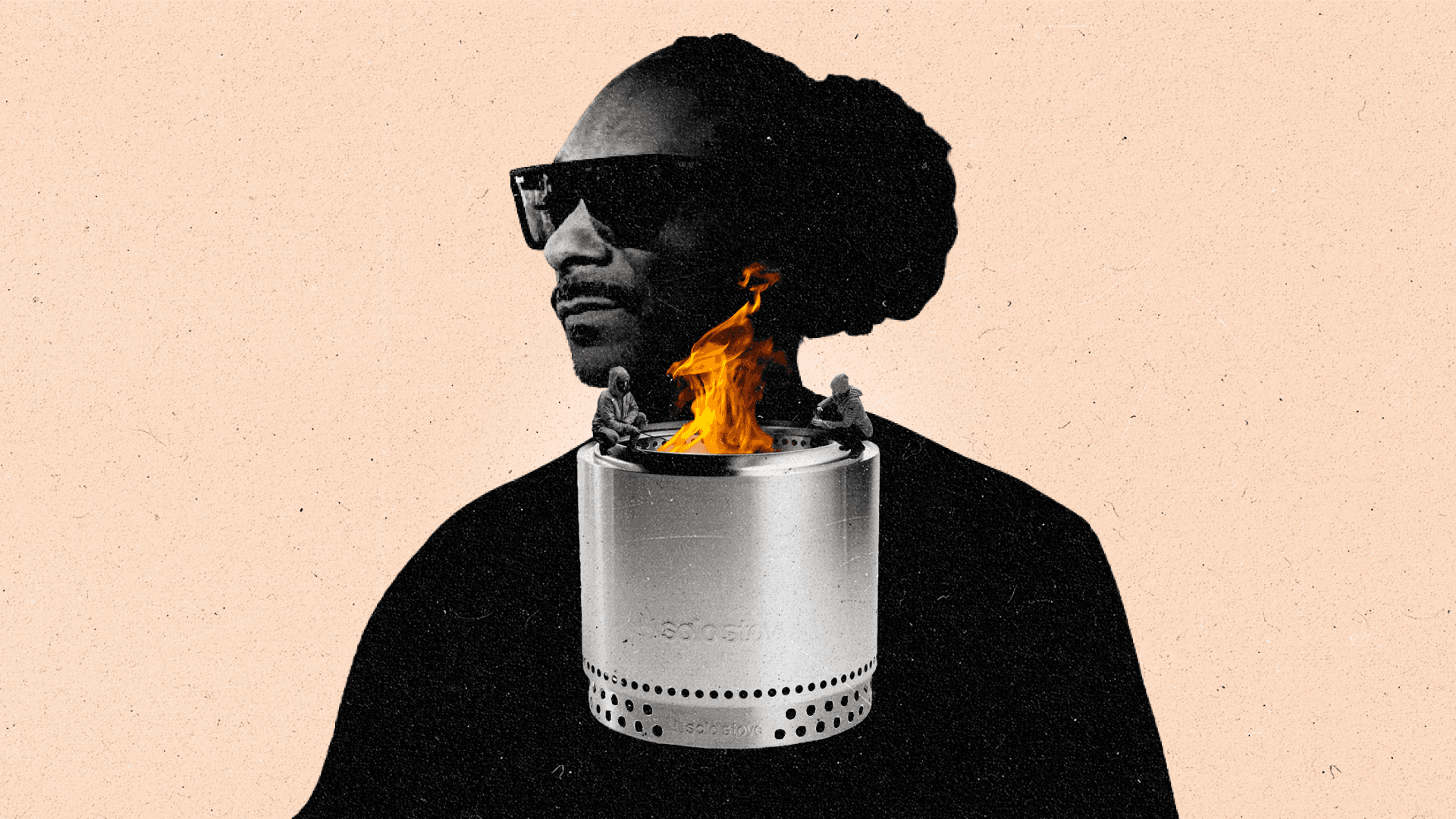Lessons from a viral Snoop Dogg campaign that went up in smoke

When Snoop Dogg announced on Instagram in November that he had “decided to give up smoke,” it raised eyebrows. Was the cannabis-happy rapper really going cold turkey? Days later, Solo Stove, which makes a smokeless firepit, named him its official “smokesman.”
Turns out the announcement was part of an advertising campaign, created by The Martin Agency, that soon went viral. The video ad has 1.8 million views on YouTube; Solo Stove gained thousands of new social media followers; and Ad Age ranked it No. 18 among its best ads of 2023.
But the campaign soon flamed out; in early January, Solo Stove’s CEO, John Merris, resigned. Its interim CFO said in a statement that its marketing campaigns “did not lead to the sales lift that we had planned.” The company lowered its revenue guidance for 2023.
“The campaign was a success in terms of visibility, but its shortcomings in converting awareness into revenue were evident,” says Nyah Chapman, founder and creative director of media agency Luxe List Media.
The fallout shows how a viral and creative idea can only take a campaign so far. While it generated online buzz, the disappointing sales could suggest that it largely failed to convert brand discoverers into customers.
“Storytelling alone isn’t enough; you need story-selling.”
Daniel Burke, freelance go-to-market marketing analyst
Without the proper support to target the right audience, even the best and brightest campaigns may not live up to expectations. The campaign flop further illustrates the delicate balance facing many marketers today when allocating budget and attention between branding and performance efforts. Focusing on the right channels — and utilizing data-driven approaches to help maximize reach and land the spot in front of specific consumers — has become just as imperative as flashy creative.
“While creativity for the sake of fun or buzz can be enticing, it’s essential to balance it with a data-driven approach, considering the ultimate objective of business prosperity,” Pedro Wald, a senior marketing strategy consultant, tells The Current. “Companies like Ikea serve as excellent examples of successfully blending data and creativity. Their creative endeavors are deeply rooted in customer knowledge and insights, resulting in ads that resonate effectively with their audience.”
Finding the right audience
Consumer insights are today’s gold mine for a successful campaign. But Daniel Burke, a freelance go-to-market marketing analyst, says advertisers can’t succeed in precision targeting or personalization without investing in solid ad tech and martech to analyze consumer data and test different strategies.
“Personalization and precision targeting is not a destination, it’s a direction,” he says. “You move in the right direction through experimentation.”
Chapman suggests that companies like Solo Stove could target “consumers genuinely interested in outdoor recreation and firepits,” rather than focusing too heavily on a spokesperson.
Echoing this sentiment, Wald shares his view that leaning on celebrities in campaigns can be a double-edged sword: it can drive awareness, but also overshadow the product and its purpose.
“The campaign unintentionally became more about the celebrity endorsement than the product itself,” Wald says. “While the viral headline attracted attention, the conversion rate suffered as the benefits of the firepit were relegated to an afterthought. A firepit is inherently a passion product, and Solo Stove’s ad failed to evoke that desire, missing a crucial opportunity to engage the audience.”
As Burke says: “Storytelling alone isn’t enough; you need story-selling.”
The biggest lessons for marketers
Ultimately, the three marketing experts The Current spoke with agree that the campaign lacked a call to action and relied too heavily on Snoop Dogg’s persona, which failed to lead to what all successful product campaigns are supposed to do: increase sales.
“Marketers should ensure that celebrity endorsements align seamlessly with the brand and product, avoiding forced fits that can backfire,” Chapman says. “Clarity, purposeful messaging, and a compelling call to action are indispensable components for sustained engagement and conversion.”
Burke said the Solo Stove debacle — and all campaigns that get attention but don’t convert — underscores the importance of communication, ensuring everyone is aligned on goals, KPIs, and timelines.
For Wald, a crucial lesson is to never fall too in love with an idea.
“This often results in a scenario where the idea looks good on paper but fails to deliver or steer the campaign in the right direction,” he says. “Objectivity and a willingness to adapt are key to successful marketing endeavors.”
Subscribe to The Current
Subscribe to The Current newsletter